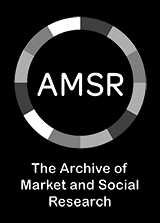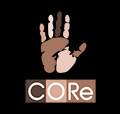Positionality and UX: Is it ever okay to be the user?
The Insight Rooms – 23 June 2021
Source https://www.spotless.co.uk/blog/positionality-and-ux-is-it-ever-okay-to-be-the-user/
So How Does This Work in Anthropology?
Coming from a background in Anthropology, positionality and the site of research is a contentious subject. Key considerations often involve: who you are, what your relationship is to the subject, how this will impact your research, and how you will approach these influences?
It is not uncommon for Anthropologists to dedicate a section of their ethnographies to exploring how their experience, knowledge, or connections might impact their work and how they have mitigated or incorporated this into their findings. These sections help the researcher and the audience to better understand the site of research and why certain approaches were used. Furthermore, it highlights that the researcher is not naive to their potential biases and is open to sharing these considerations instead of pretending they do not exist.

Illustration by Drawkit.io
What About Positionality in UX?
In the world of UX, it is largely accepted that “You Are Not the User” — it is somewhat of a mantra for user experience professionals. It is the idea that you should never act as the user or influence the outcome of your user research. By doing this, researchers may cause the False-Consensus Effect, a psychological concept where people falsely assume that their views or behaviours will be in line with others in a similar context. In other words, it is the tech version of a parent claiming to be on the same wavelength as their children–when in most cases, they are not. Take the example of using pop culture references a few years out-of-date, followed by a “Isn’t this what you lot do nowadays?”. In the context of UX, this leads to services and products that do not meet user needs. Whereas the latter example leads to an embarrassed child and a confused parent. However, both examples are based on the assumption that one knows how another would act in certain situations when, in fact, they do not have the adequate intersectional capability to make these judgements.
Moving from Anthropology to UX, this point has been one that has taken the most time for me to wrap my head around:
How are we not our users?
We are all users ourselves, right?
What if we actually use the service/product that we are testing?
Is there honestly no place for positionality?
Methodologies in UX can sometimes crossover with the research methods used in Anthropology, for example, ethnographic research. In Anthropology, ethnographic research is usually carried out using participant observation, which is a method that allows the researcher to get involved with the behaviours and activities that are being studied, in addition to general observational techniques. Ethnographic research in UX does not include participant observation, instead, it focuses on studying the user in their environment in a more passive manner.
Therefore, there is essentially no point where the researcher acts as the user. Ethnographic research is conducted this way, in user experience, to allow for a more organic display of behaviours that are minimally disrupted by external influences. With the ultimate purpose, here, being to replicate the user’s true environment as much as possible. With this in mind, ethnographic studies often take place in the user’s home or the environment that they are most likely to use the service or product. Therefore, creating an as true-to-life scenario as most possible.
So What Exactly Would Happen if the Researcher Became the User?
I am sure we have all come across a service that comes with all the bells and whistles relating to beautiful design and new and exciting features. However, there is one problem–you can’t figure out how to use it. How many times have we all used a service that is constantly being updated whether visually or functionally and thought “What on earth were they thinking?” Well, oftentimes the people who designed these products were developers and designers, who thought that they were the users themselves. They got caught up in the ideas of knowing what the actual user would want, just because they are familiar with the service.
When working in multidisciplinary teams, you can often lose sight of who the user is and what the users need and not want. This is known as dogfooding, in product development teams, where everyone is constantly working on the same product and finds ways to improve its design based on the features they commonly use. Therefore, missing out on the features that are not as frequently used, for example, catering to those who are completely new to the service or those who are signing up for the first time. Consequentially you may develop an attachment to your service or product and start to implement pet features that don’t need to be there. Our job is never to assume–but to act on tangible data. Further to this, even if the researcher is a frequent user of the product or service, your tech-savviness is probably miles ahead of that of a regular user. So it’s not to say that your input would be irrelevant, but it would not be relevant to a suitable representation of users.
My next question would be, what about innovation? What about all of the never-before-seen products and services that have come out solely through testing and researching within multidisciplinary teams? Is there a place for the researcher to become the user then? Yes! These are what innovation labs are for, where budget and company priorities are available, designers and researchers can conjure up exciting and new ideas that don’t necessarily need to be user-tested at conception. It allows for creativity and freedom that may not be as present during standard design sprints, where there is a set user need or goal that is being looked at. A place for ideation and design thinking to your heart’s content.


Photo by Antonio Scalogna on Unsplash | Photo by Josh Sorenson on Pexels
However, as a member of a Innovation Lab, you may miss some of the key user-centred design practices, in the earlier stages of development, which are crucial for launching successful products and services. Instead, you may develop ideas and features that look and sound great but may not be needed by the user at all. There is definitely a place for this type of research in the UX market, however, it is only likely to be conducted in organisations with the scope and resources for experimentation. If that happens to be where you work then by all means treat yourself as the user. Just don’t forget that the final product will need to be user-tested and–who knows–you may just have developed a new groundbreaking service or feature, so make the most of the process.
But still, the question remains why is positionality and putting yourself in the shoes of those being researched okay in Anthropology but not in user experience. The answer is the objective. The objective of anthropological research and user research are two completely different things. Ethnography and anthropology are often used as a means to educate and bring awareness to cultures and practices at a ground level but through, the lens of the author–there is a lot of room for subjectivity and interpretation, that so long as this is accounted for does not diminish the findings produced. User research, on the other hand, is research based on results and data, although this data may not be factual or apply to all user groups, it is data often collected through iterative and consistent testing. The objective of user research usually involves making informed decisions for users based on the insights collected throughout the research. There is a deliberate and actionable result from the data produced during user research. This is not necessarily the case in Anthropology. The results of user research will have a long-lasting and repeated impact on users and the services that they use, the product of anthropological research, does not serve this purpose.
So What’s the Verdict?
In this post, we have explored the arguments surrounding positionality and user research–what it means, how it affects users and when it might occur–but what is the verdict? Is it ever okay to be the user?
If you want to be the user and the researcher, then the field of UX may not be the best fit for you, because ultimately you are not the user, and even if you are, you are not every user. However, if you are taking an innovative approach to user research and design then there may be scope to be the user and the researcher–but the end result should always be user-tested. Yes, there are circumstances where being the user can work for a limited time; however, in most user-related contexts, I would say that being the user is not the best idea. The field of UX is about bringing the user to the forefront of design and implementation therefore, there should never be a point where this objective is missed. After all, it is the actual user’s experience that matters the most.
Advertisement
Get the latest MRS news
Our newsletters cover the latest MRS events, policy updates and research news.














